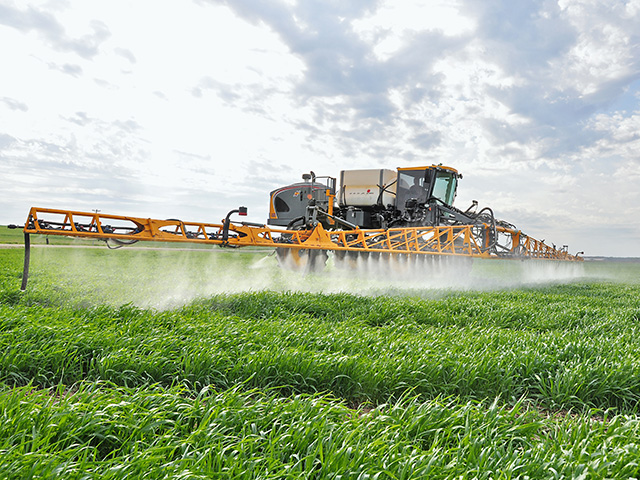Cover Crops Adoption Remains Low
AGree Says Federal Crop Insurance Program Hindering Conservation Adoption
LINCOLN, Neb. (DTN) -- As the Biden administration and Congress consider policies to expand conservation efforts to combat climate change, a pair of studies released on Wednesday show adoption of cover crops remains low even though planting cover crops can lead to fewer crop-insurance claims.
A decline in cover crop adoption growth coincided with a decline in federal funds available through the Environmental Quality Incentives Program, or EQIP, and the Conservation Stewardship Program, or CSP, the Environmental Work Group found in its study.
Also on Wednesday, the AGree Economic and Environmental Risk Coalition, a group that advocates for federal policies to drive adoption of conservation practices, said in a new white paper that farmers who use conservation practices such as cover crops can reduce yield risk and, as a result, file fewer insurance claims.
AGree said improvements still need to be made to the Federal Crop Insurance Program, however, to make cover-crop adoption more feasible for farmers.
The results of an Environmental Working Group study show that, in 2019, 1 in every 20 acres of corn and soybeans in Illinois, Indiana, Iowa and Minnesota -- or just 3.2 million acres out of 68 million total acres -- were protected by cover crops.
From 2015 to 2017, cover crop usage grew in Illinois, Iowa and Indiana, according to EWG, but their implementation "slowed markedly" between 2017 and 2019.
"Financial support to use cover crops from EQIP and CSP peaked at $19 million across all four states in 2017 but fell to $11 million in 2019," EWG said. "Total cover crop funding in 2019 accounted for a little more than 22% of all EQIP and CSP funding in the four states."
EWG found Indiana had the highest percentage of cover crop area at 9.2%, followed by Iowa at 4.2%, Illinois at 3.9% and Minnesota at 3.8%.
P[L1] D[0x0] M[300x250] OOP[F] ADUNIT[] T[]
About 90% of all corn and soybean acres and about 85% of wheat acres are insured by the Federal Crop Insurance Program, covering about 195 million acres.
AGree said that each year, billions of dollars in insurance claims are paid out, including a record $4.2 billion in prevented planting indemnities in 2019 as a result of wet weather.
"Given the high enrollment and significant federal subsidization, crop insurance has the potential to drive broader adoption of agricultural conservation practices that reduce risk and provide a host of economic and ecological co-benefits including, for example, sequestering carbon and improving water quality," AGree said in the paper.
"Mounting scientific evidence shows that conservation practice implementation reduces crop yield risk during times of drought, heavy precipitation and flooding. Additionally, conservation practices provide multiple environmental benefits, including improved water quality and soil moisture management, carbon sequestration, and habitat. These co-benefits may also create new funding streams for farmers as carbon and water quality markets come online."
AGree said although the 2018 farm bill made improvements to cover crops and crop insurance eligibility, a number of policy impediments "hinder conservation practice adoption by farmers who participate in the FCIP."
Those barriers include policies that prevent or make conservation practices adoption challenging, lack of information as to the compatibility of conservation practices with the Federal Crop Insurance Program, and a lack of incentives to implement conservation practices.
Earlier in June, USDA announced the Pandemic Cover Crop Program offered through the Risk Management Agency to help farmers maintain their cover crop systems despite financial challenges posed by the pandemic (https://www.dtnpf.com/…).
The program gives farmers a $5 premium benefit on their crop insurance for planting cover crops.
A 2018 study by researchers at nonprofit organizations, universities and government agencies (https://advances.sciencemag.org/…) estimate planting cover crops on 217 million acres of cropland -- 14 times USDA's estimates of cover crops planted nationally -- could bank enough carbon to offset about 1.6% of all net emissions in the United States.
"Other research suggests that any carbon-capture benefits of cover crops are effective only as long as the land remains covered and untilled," EWG said in its study.
EWG found in Iowa, Indiana and Illinois, 1 in every 6 acres was protected by cover crops in both 2017 and 2019, and only 1 in 17 acres was protected in 2015, 2017 and 2019.
"Meanwhile, the scale of cover crops use remains dramatically below what is needed to significantly reduce fertilizer runoff and soil loss," EWG said.
Read the Environmental Working Group study here: https://www.ewg.org/…
Read the AGree study here: https://foodandagpolicy.org/…
Todd Neeley can be reached at todd.neeley@dtn.com
Follow him on Twitter @DTNeeley
(c) Copyright 2021 DTN, LLC. All rights reserved.






